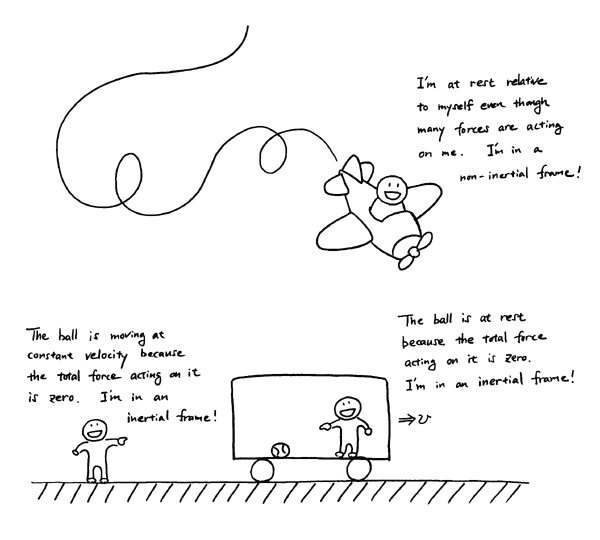

|
College of Science Physics Dept Tatsu Takeuchi Special Relativity Lecture Notes |
 1
2
3
4
5
6
7
8
9
10
11
12
13
14
15
16
17
1
2
3
4
5
6
7
8
9
10
11
12
13
14
15
16
17

2. Inertial FramesNewton's first law, aka the law of inertia, states that
This law is actually not always correct! (surprised?) It depends on which frame you are using to describe the motion of the object. For instance, if you are using the moving object itself as the origin of your frame of reference, it is always at rest no matter what forces are acting on it. Another example is the motion of objects inside the space shuttle in orbit. They do not move relative to the space shuttle even though gravity is acting on them. Or take the bowling ball you have in your car trunk. When you accelerate it will roll backward and when you brake it will roll forward even though there are no forces acting on it in those directions. So when we talk about the law of inertia, we are assuming that a frame exists in which the law is correct. Such a frame is called an inertial frame. If one such inertial frame exists, then an infinite number of other inertial frames exist since any frame that is moving at a constant relative velocity to the first inertial frame is also an inertial frame. The frames in which the law of inertia does NOT hold are those that are accelerating with respect to inertial frames. They are called non-inertial frames. 
|